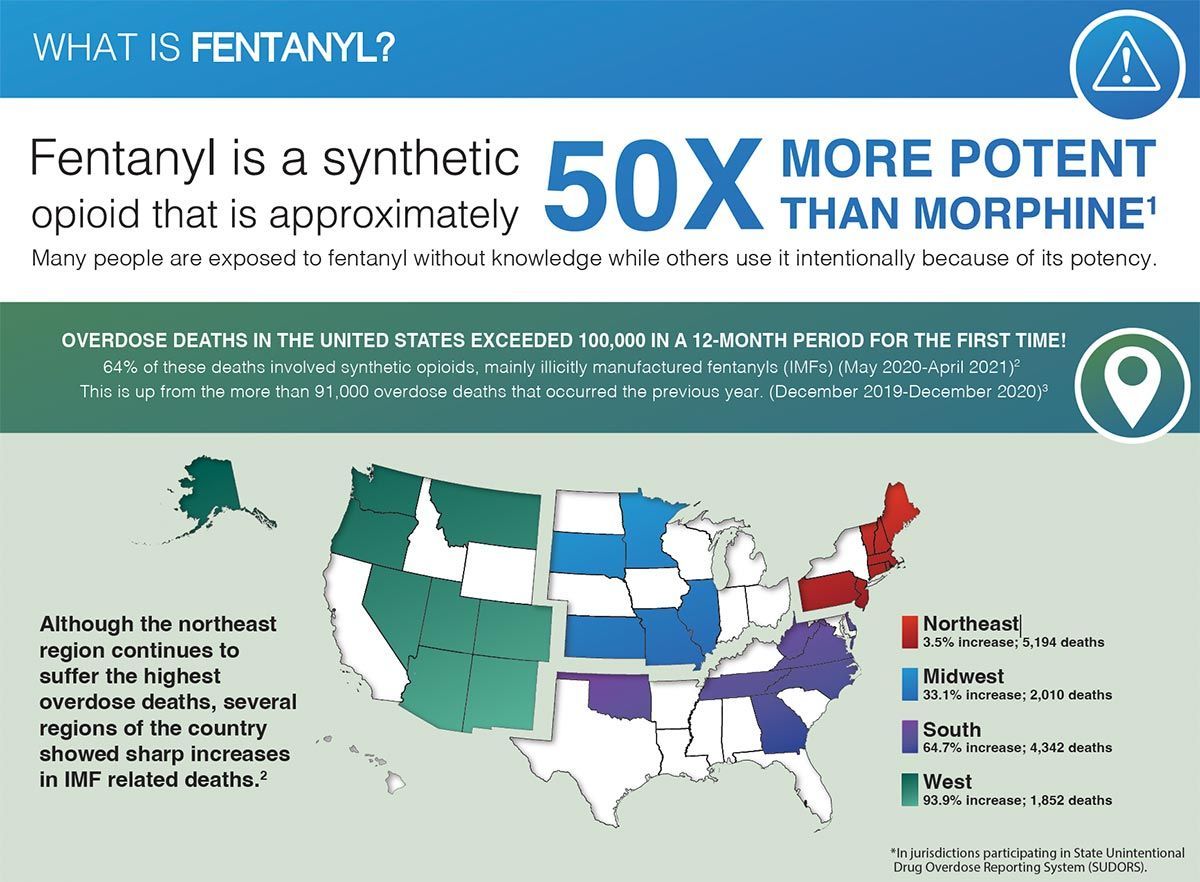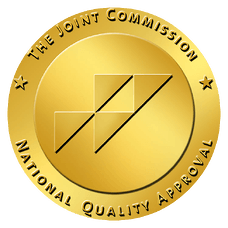Fentanyl Addiction Treatment and Rehab
Fentanyl: A Powerful Synthetic Opioid
Fentanyl is a synthetic opioid celebrated for its remarkable strength—about 50 to 100 times stronger than morphine. Commonly used in hospitals after major surgeries or medical treatments, this prescription drug has diverse applications. Regrettably, it is also illegally manufactured, creating serious dangers for individuals who choose to misuse it.
Prescription fentanyl is also known as:
- Sublimaze
- Duragesic
- Actiq
Street names for fentanyl include:
- Dance Fever
- Goodfellas
- Murder 8
- Tango & Cash
- Jackpot
- Friend
- Apache
Complete the pre-screen form below to initiate the admission process. Our admissions team will contact you shortly.

What Makes Fentanyl So Dangerous?
Fentanyl poses a significant risk due to its extraordinary potency, being 50 to 100 times more powerful than morphine. Even a tiny amount can have profound effects on the body, necessitating strict controls and caution in administration due to the narrow margin for error. It’s easy to accidentally administer a dose that leads to overdose, emphasizing the need for vigilance when handling it. In 2017, fentanyl was linked to over 50% of opioid-related deaths in the U.S.
How Do People Use Fentanyl?
Prescription fentanyl comes in various forms, such as injections, lozenges, and transdermal patches. Lozenge designs allow for gradual medication release, while patches absorb the drug slowly through the skin for prolonged pain relief, ideal for chronic pain. Injections provide rapid medication delivery for acute care, typically administered by professionals.
Illicit fentanyl appears in forms like eye drops, nasal sprays, pills, powders, and blotter paper, often mixed with substances like heroin or cocaine to enhance effects. Its extreme potency poses a significant overdose risk, making awareness and caution essential for users.
What Are the Symptoms of Fentanyl Abuse?
The use of fentanyl can lead to a variety of symptoms. Some of the side effects associated with fentanyl include:
- Intense short-term highs
- Euphoria
- Nausea
- Fainting
- Seizures
- Fatalities
- Slowed breathing
- Lowered blood pressure
- Constricted pupils
- Sedation
- Vomiting
- Urinary retention
Is Fentanyl Dangerous?
Fentanyl poses a serious overdose risk due to the ease of consuming too much. An overdose occurs when someone takes more fentanyl than their body can handle, leading to hypoxia, a condition where the brain lacks sufficient oxygen. Without prompt treatment, this can lead to death.
What Are the Methods of Fentanyl Abuse?
When misused, fentanyl can be injected, snorted, taken as a pill, or used on blotter paper. Prescription fentanyl gel patches may be misused by extracting the gel for ingestion or injection. The DEA has observed these patches being cut and placed in the mouth. Illicitly manufactured fentanyl is often mixed with other drugs like heroin, cocaine, or methamphetamine, significantly raising the risk of severe side effects and overdose.
What Are the Treatments for a Fentanyl Overdose?
A fentanyl overdose can be quickly treated with Naloxone, an opioid antagonist that counteracts opioid effects. Commonly known as NARCAN, this medication is available to EMS, law enforcement, pharmacists, and other licensed professionals. Many prescribed opioids are also provided with NARCAN to ensure access during accidental overdoses.
How Long Does Fentanyl Withdrawal Last?
Withdrawal symptoms are usually short-lived, improving within 72 hours and significantly diminishing within a week for most people.
How Are Symptoms of Fentanyl Withdrawal Treated?
Fentanyl withdrawal symptoms can be distressing and pose significant risks. This underscores the importance of seeking medical treatment in a regulated environment, which often leads to better outcomes than quitting suddenly or reducing dosage independently. It’s essential to recognize the varying degrees of withdrawal, from mild to severe, and the potential for complications.
What Can You Expect from Wildcat Recovery During an Outpatient Rehab Program?
When someone struggles with fentanyl addiction and enters a detox facility, the main goal is safe detoxification. This process may include long-term medications and close monitoring to manage severe withdrawal symptoms, like electrolyte imbalances.
Detox typically starts within six hours after the last dose, with relief potentially taking up to 10 days. Withdrawal symptoms often appear in waves, peaking around 72 hours and gradually decreasing in intensity.
At Wildcat Recovery, we focus on a smooth transition from detox to rehabilitation, ensuring holistic care. After overcoming withdrawal, patients enter our intensive outpatient program, which addresses both the psychological and physiological aspects of addiction.
Our rehabilitation uses dual-diagnosis treatment to tackle co-occurring mental health issues alongside substance use. We offer behavioral therapy to help patients change harmful thought patterns, group therapy for community support, and private counseling for personalized challenges.
While some may choose not to undergo rehabilitation, this increases the risk of relapse. Research shows that without proper support, individuals are more likely to return to

